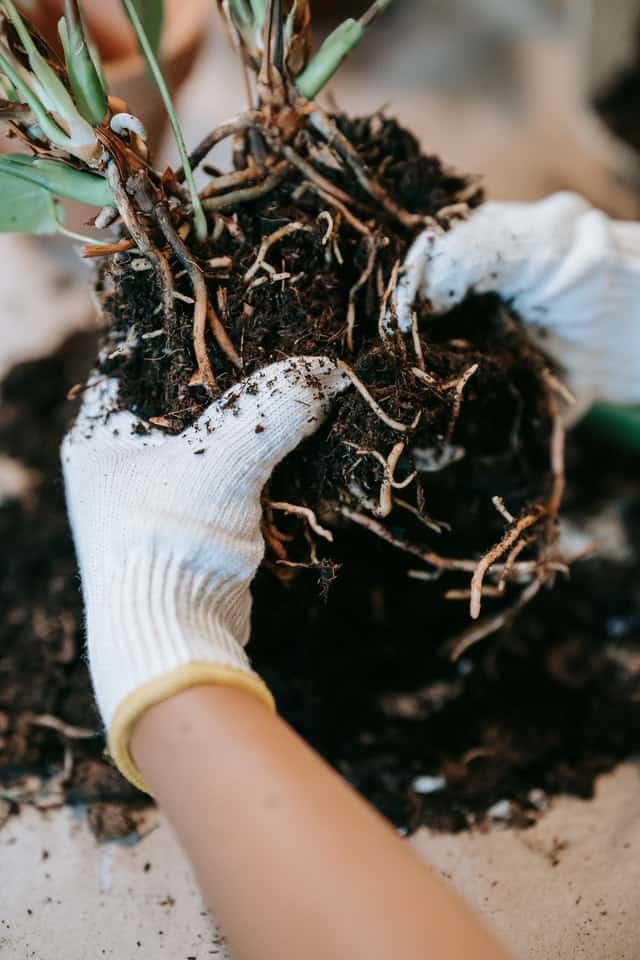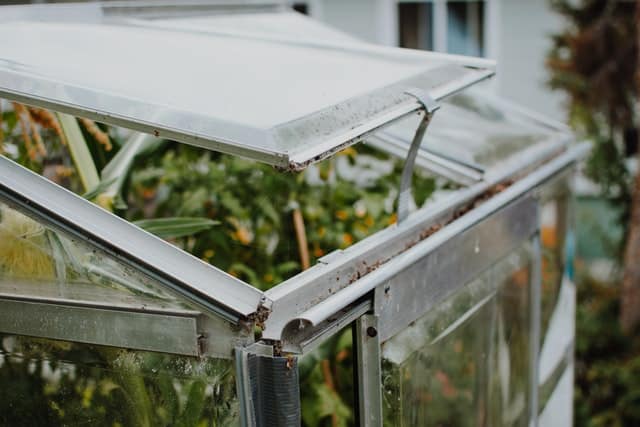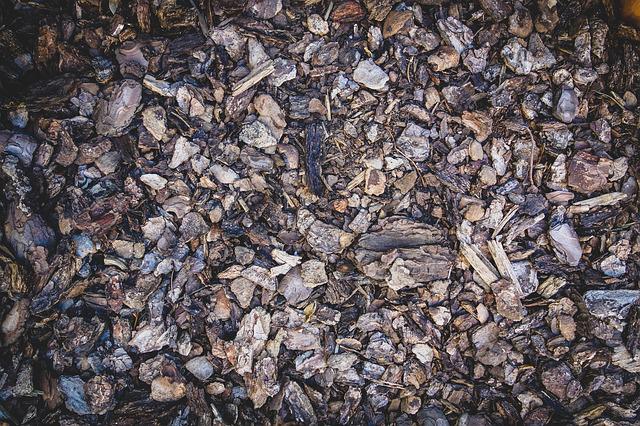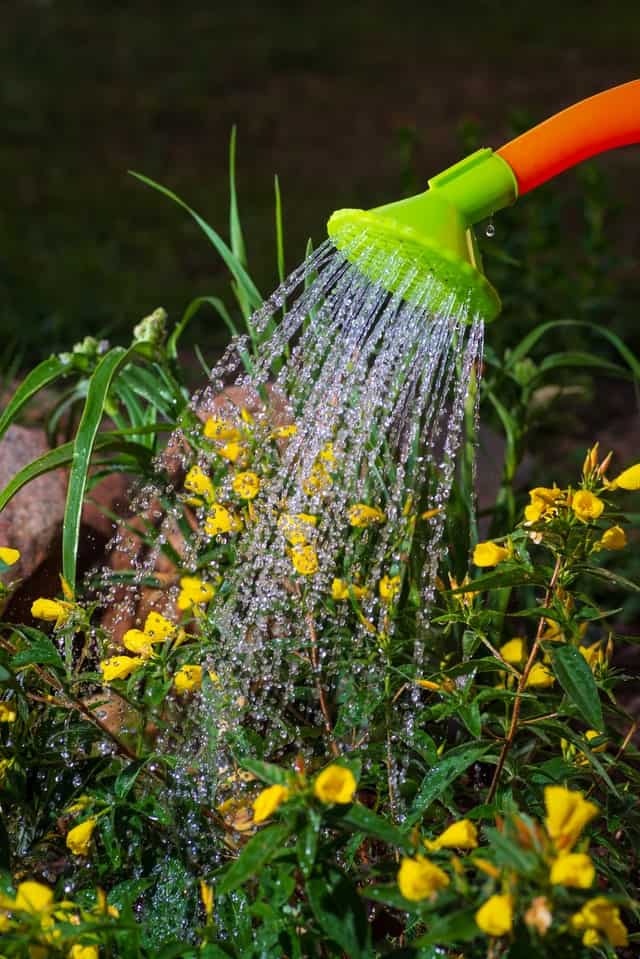How To Dry Wet Soil Fast? Read Our Guide 2022
[ad_1]
One of the easiest ways to kill a plant is to overwater it. This is because overwatering plants essentially causes them to drown in excess moisture. I’m sure many of us have unknowingly done this before without realizing just how harmful it can be, but the good news is that it’s an easy problem to fix.
If you’ve made this mistake and don’t know how to save your plant, this one’s for you! Keep reading to find out everything you need to know about how to dry wet soil fast.
The Dangers Of Overwatered Soil

Before we get into how to fix the issue, let’s discuss why overwatered soil is such a bad thing in the first place. I grew up thinking the more water I gave a plant, the more “taken care of” it would be. Boy oh boy, was I wrong!
The key to fostering a healthy environment for plants is balance, which means that they need to have the right amount of water, sunlight, temperature, and space to grow healthily. Too much or too little of these elements could put your plants in harm’s way, so striking that perfect balance is a must.
For the purposes of this article, I’m going to focus on the overwatering aspect. Poor soil drainage, which causes waterlogging, is one of the most common reasons for plant roots to suffer and die in fresh soil. Overwatering basically suffocates the plant’s roots, makes it heavier than dry soil, and results in a loss of vigor in the plant.
Waterlogged soil leads to a lack of oxygen in the plant, and the longer the plant’s access to air is restricted or cut off, the greater the damage to its roots. Once root rot sets in, the decaying parts of the plant will no longer be able to circulate nutrients and water throughout the plant, putting its overall health at risk.

In addition to this, plants that are in waterlogged soil and suffering from root rot have a greater chance of being exposed to fungal pathogens as compared to those that are in adequately watered soil.
You’ll be able to spot a plant that’s suffering from overwatering by the following symptoms:
- Yellowing leaves
- Stunted slow growth
- Leaf burn
- Watersoaked blisters on stems and leaves
- Rotting plant crown
- Soft and puffy leaves
- Root rot
- Wilting
- Falling leaves
- Diseases

11 Ways To Dry Wet Soil Fast
So you mistakenly got carried away while watering your garden and now your plants can’t seem to handle all that excess water? How do you get the soil dry?
While you may not be able to physically remove water once it has been in contact with soil, there are a couple of ways to handle overwatered soil to ensure that it doesn’t cause harm to your plants.
Here are some of the best and easiest ways to save your plants in overwatered soil.
Stop Watering Immediately
If you suspect that your plants may have received too much water, you need to stop watering them immediately to try to get the soil completely dry.
Generally speaking, it is important to give the soil some time to dry before watering it again. This will also give the water time to evaporate.
Fix The Soil Drainage
The first point of action when you’re trying to prevent overwatered soil from killing your plants is to fix your soil drainage. Soggy soil can be treated by elevating the soil. You can do this by planting on a mound or raised bed.
To fix soil drainage in potted plants, simply add more drainage holes to the pot. You can add drainage holes to both the sides and bottom of the pot. This will help create air pockets to improve aeration and root growth. If this doesn’t work, you can repot your plants.
Repotting should always be a last resort, but if drilling drainage holes doesn’t work, it’s a necessary move.
When repotting, always test the potting soil to see whether it has good drainage. Instead of interfering with your plants too much, you can test the soil before transplanting. To make sure that your plants don’t experience the same fate again, mix your soil with some sand or perlite or add more drainage holes.
If you have good drainage, the excess water will gradually spread through the soil or make its way out of the pot. Poor drainage will result in soggy soil. Plant damage will occur if soggy soil is a regular occurrence, which can be caused by consistent overwatering and poor drainage.
Use Lime
Quicklime and hydrated lime are both very useful in drying out wet soil. Quicklime reacts with the moisture in the wet soil and generates a high amount of heat energy, which dries up the excess soil moisture.
Hydrated lime, also called slaked lime, is basically made by adding water to quick lime. Containing calcium hydroxide, hydrated lime is known to raise soil pH, improve soil structure and help plants to strengthen and grow healthily by helping roots absorb more nutrients.
To use lime in your garden, you will first need to make sure that your fresh soil is soft and loosened. Dig into the affected area and spread some lime evenly. Once applied, mix in some soil until the lime particles are no longer visible.
Remove Stagnant Water
If there’s so much water around your plants that it’s literally created pools that you could scoop out, go ahead and remove them. Try not to disturb the plant as much as possible while removing the water.
By getting rid of the stagnant water, it’ll be much easier to dry the soil faster without the excess seepage waiting to infiltrate the soil.
Check Whether The Type Of Soil You Have Is Adequate

Soil that is rich and loose will give you the best drainage, while soil made up of very fine particles, such as clay, will become sticky when in contact with water. This results in poor drainage because the soil will clump and block water from flowing into other parts of the soil.
If you have clay or similar soil in your yard, you can improve drainage by mixing in sand or compost to break up the fine particles. Regularly loosening the soil will also be helpful because it’ll help the plant’s roots to grow freely and create air pockets instead of being restricted by tough soil.
Check out this article for more ways to improve garden soil!
Provide More Sunlight To The Wet Soil

This one may not work in all cases, but there might be a couple of things you could do to increase the sunlight received in the wet area.
If you’re looking to dry a patch of wet soil that doesn’t have any plants growing in it, simply plop the soil in another area of your yard that receives more natural and direct sunlight.
If you have plants growing in the affected area, you can try to remove anything in the way of that area receiving as much sunlight as possible. For example, you could prune any overhead branches blocking the sunlight, move the plants to a sunnier spot in your garden, or face the plants in another direction if they aren’t facing the sun.
Increase Ventilation For Indoor Plants & Expose Outdoor Plants To Wind

If your indoor plants have been overwatered, you might want to look into ways to increase ventilation in the area they’re located. Remember that indoor plants are cut off from natural weather conditions that help plants grow, such as the wind.
We tend to think that the wind doesn’t really have a place in plant growth, but it definitely does! The wind toughens plant roots, increases pollination, moves water vapor away from the soil and prevents stagnant water and mold from developing.
By manually improving ventilation, you can mimic the benefits of the wind to help your indoor plants flourish. An easy way to accomplish this is to use a small fan on low speed and place it at least 3 feet away from the plants. This will make sure that they’re not blown too vigorously and that they don’t get too dry. You can also move the plant outdoors or place them near a window.
Wind speeds up the rate of evaporation, allowing the soil to dry out naturally and stimulating transpiration. If your outdoor plants are in an area of your garden that is protected from the wind, try moving them to an area where they’ll be exposed to it.
Absorb Excess Water With Paper
If the soil is overwatered but doesn’t have pools of water, you can use paper to absorb the excess water. You can use paper bags, paper towels, or newspaper for this. Simply place them onto the overwatered soil and press down gently. You can also dab the soil with paper towels to remove the water quickly.
When the paper is wet, you can replace them with new ones. Keep going until you notice that the soil has dried out enough.
This video from YouTube user Swedish Plantguys does a great job of demonstrating how to dry soggy soil:
Create Pockets Of Air Around Potted Plants
Just like every other living organism, plant roots also need air to breathe and function well. You can create pockets of air around potted plants to achieve this without having to repot them. If the soil is loose enough, all you need to do is tilt the plant to one side and then tilt it to the other.
This movement will increase aeration by causing it to separate from the bottom of the pot, allowing air to circulate beneath the roots, as well as around its sides.
Remove Mulch From The Soil

If you’ve given your soil a good dose of mulch and they’ve now been overwatered, now would be a good time to remove the mulch. One of the benefits of mulch is to increase moisture in the soil, but in this case, it’s not really a good thing because you’re already dealing with excessive soil moisture.
Removing mulch will also help boost evaporation by exposing the soil, allowing for the water to clear up faster.
Use A Hairdryer
As unconventional as it may sound, a hairdryer is actually very useful when trying to dry out wet soil fast. There are a couple of careful considerations you should keep in mind when using a hairdryer for this purpose, but if done correctly, get ready to say goodbye to soggy soil!
Using a hairdryer on wet soil will only dry out the top layer, leaving behind a soggy base. You can remove all the wet soil, spread it out, use the hairdryer and then put it back where it belongs. It does require a bit of effort, but it’s a fast way to get the job done.
If you’re planning on trying out this method of drying out wet soil, please remember to use it on low to medium heat and at a low speed. Soil is enriched with microorganisms that provide beneficial nutrients to plants and using a hairdryer on high heat will kill them. You also don’t want to use it at a high speed and have soil flying all over the place.
Best Watering Practices To Maintain Dry Soil

Deep Watering
Water your garden less frequently but for longer periods. This will allow your plant roots to grow deep into the soil where it is moist and a lot cooler than it is higher up. Thorough, deep watering encourages the growth of healthy plants.
Don’t Water According To A Strict Schedule
Pay attention to what your plants need. The weather isn’t always consistent enough to warrant a strict watering schedule. Rather monitor factors such as rainfall, sunlight, and wind instead and check how best you can treat your plants in light of the weather.
For example, if it’s been unusually hot, you could add an extra watering session and if it’s been raining all week, you’ll probably have to cancel all watering sessions for the week.
Use A Moisture Meter
A moisture meter will help you figure out when it’s time for your next watering session. It’ll give you an indication of how dry or wet your garden soil is.
FAQs
What Do I Do If My Soil Is Too Wet?
If your soil is too wet, you can repot your plant using new soil or try out any of the above methods to dry out the wet soil. It is highly recommended that you attempt to dry it out before repotting in order to avoid interfering with the plants.
How Does Soil Particle Size Affect Texture And Drainage?
Soil particle size affects texture and drainage because the larger the particle size, the better drainage you will have. Similarly, the smaller the particle size, the poorer the drainage. This is why soil types such as clay, which is made up of small particles, has poor drainage.
Ready To Try Out These Soil Drying Methods?
One of the worst things to happen to a plant lover or gardener is seeing their beloved plant babies at risk of dying after working so hard to grow them. Whether you unknowingly overwatered it or experienced heavy rain in your region, your soil deserves a second chance.
I hope you give these methods a try as you work towards dry garden soil before transplanting or repotting! Did you find my article helpful? Please let me know what you think in the comments below! I’d love to hear from you.
Last update on 2022-05-03 at 12:29 / Affiliate links / Images from Amazon Product Advertising API
[ad_2]
Source link







